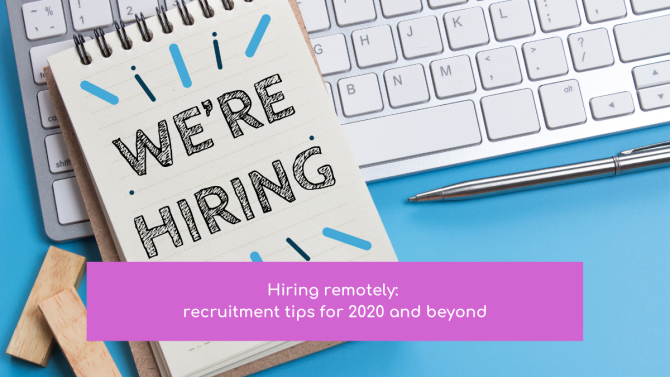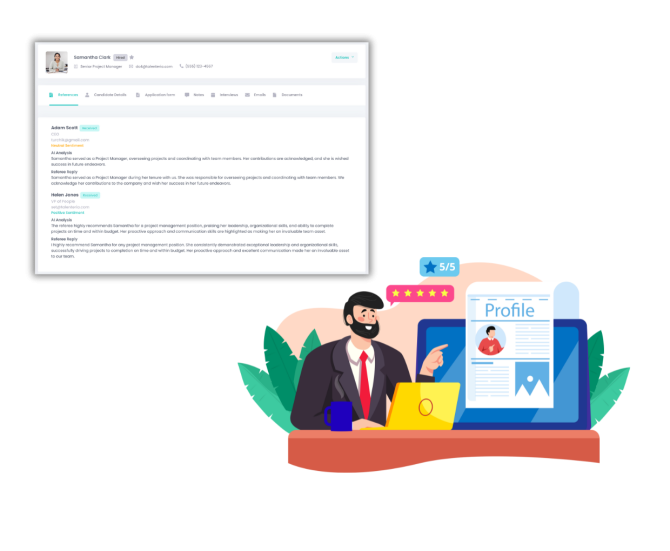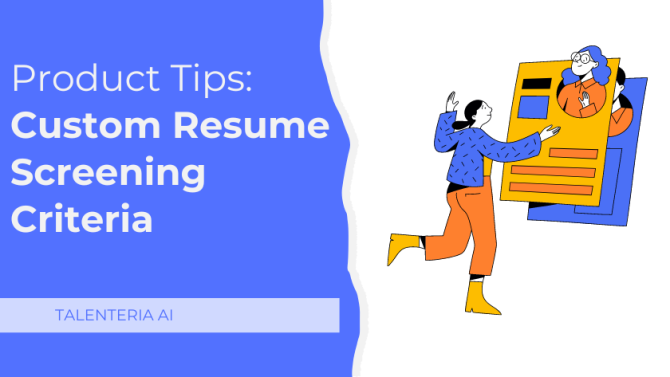
For a long time, remote work has been a dream for people looking for a career-life balance. The COVID-19 pandemic made its own adjustments in 2020. Now our morning routine is not about commuting, it is time for yourself, with the cup of coffee and the daily planner.
However, not everybody was ready to face new rules. The recruitment process in most of the companies was built so that it deals with in-house employees. Well, you just have no choice right now, so it is time to switch to the new system. It may become not the forced measure, but a killing solution. For example, Jack Dorcey (the Twitter CEO) has already stated their employees can work from home forever.
So, now you have a question: how all this will affect the hiring process? Let us provide you with some actionable tips that will show you the benefits and the opportunities of the remote work. And we start with the basics.
What is remote recruiting?
Talented people are not concentrated in one city or country; they are scattered all over the world.
Remote recruiting involves searching for the candidates, conducting interviews, and hiring people who work not from your office, but from anywhere in the world. Recruiters use modern technologies for video interviewing to communicate with candidates regardless of location, and sometimes even time zone.
On the one hand, the 2020 pandemic made this approach a necessity when companies simply couldn't stop their business and switched online. On the other hand, the world has finally noticed all the benefits of remote while freelancers have been talking about it for a long time.
Actionable remote recruiting tips
Adapt your job ads
Accurate and attractive job postings are a must-have for any company willing to strengthen its team with professionals. But if you're recruiting candidates remotely, approach this even more attentive.
Carefully describe the responsibilities of the prospective employee, as well as your expectations from him or her. Mention whether your company is remote-friendly and which working conditions do you provide in these terms. Your candidates should know in advance if you adhere to these approaches within the pandemic only. Already at the stage of drafting your ads, you need to think about a more personal connection with the candidates. If you can't conduct a face to face interview, you can record some videos from team members. Ask your colleagues to share information about their duties, work atmosphere, the company’s benefits, and career opportunities. Such video ads look engaging and help to build trust between the recruiter and the candidate.
Organize the entire hiring process
We have no doubts that your company has a structured recruitment process under normal circumstances. But now you need to take up the challenge and keep things running smoothly even during the remote hiring.
Your team should clearly understand what steps need to be taken, who is responsible for them, and what deadlines. This approach will make virtual hiring more consistent and reduce the risk of prejudice. Remember that not only are you evaluating candidates, but they are evaluating you. A mistake at the recruiting stage can cost you a decent professional.
Update your website
The pandemic is forcing companies to look for new methods of communication with customers, employees, and candidates.
If you want to attract more candidates, make sure your site contains the necessary information about how the company performs in these conditions. For example, if some of the employees continue to visit the office, write about the preventive methods that you use. If the work is completely remote, add a list of tools and technologies that help establish processes.
Once a potential employee lands on your website, he or she should have a clear understanding that you know what you are doing. And you know it, don’t you?
Create effective shortlists
52% of talent acquisition executives consider selecting the right candidates from a large pool of candidates to be the most challenging part of hiring.
However, this is what you should focus on right now.
Try to clearly define the criteria for evaluating candidates. Which skills are required and which are good to have? You should add them to a job description, but you should also be ready to get rid of inappropriate CVs. For example, under normal conditions, you may consider candidates with insufficient experience, but now you just can’t afford to hire them. So, you should close the CV once you see the applicant doesn’t meet your requirements. Just don’t waste your time on them.
Think about working conditions
This is not an issue that depends on the hiring team only. But you have to be as involved as possible because this is one of the factors that attract candidates.
If you expect your new employees to work from home, you need to know if the company can provide them with the necessary equipment.
You can chat with current employees and get feedback from them. What exactly do they need to do their job? If your company cannot get closure with this issue right now, indicate in the vacancy that the candidate should have an equipped workplace.
Use video interviews
Businesses such as Google, Facebook, Amazon, and Microsoft are successfully conducting virtual interviews with candidates. Follow their example.
This can be either a one-way video interview that replaces checking the phone or a two-way interview that is an alternative to a face-to-face meeting. We do not recommend that you neglect this opportunity unless non-verbal communication of potential employees is of any importance for their future work. However, even remote work requires soft skills and the culture fit, so use Zoom or Skype to “meet” your candidate.
Discuss the interview process with colleagues and work through all the processes so as not to face unexpected difficulties:
- Update the interview invitation to provide candidates with all the necessary information;
- Make sure you have a plan B for the situation when the connection just cuts;
- Take care of a quiet space to set up the meeting;
- Double-check all of your gadgets, headphones, mic, software before the call;
- Be the first to show up and don’t make your candidates wait for you;
- Be friendly and easy-going, try to create a good atmosphere;
- Explain the ways to follow up with you and get the feedback;
- Ensure your organization is able to guarantee privacy and cybersecurity on all fronts.
Do not expect that you will immediately adjust the process and everything will go like clockwork. There will be mistakes and you also need to anticipate them or work them through.
Stay in touch with the hiring team
As long as you focus on the candidate experience, you should not forget about your teams, because all these links belong to the one chain.
By keeping in touch with other recruiters, you will be able to stay on the same page. Make sure all your colleagues are involved in the process, understand their responsibilities and deadlines.
Install the good applicant tracking system (if you haven't already) and set up communication integration for effective communication. Talk about situations related to remote hiring, for example, what your recruiters will do if their children are at home during the video interview? Will they work according to your regular schedule or you make it more flexible?
Develop a test task
Since you cannot personally meet with a candidate and test his or her skills, you need another solution. Work with the department leader for whom you’re hiring for, to develop a test task, and set a deadline for it. It will help evaluate the ability of different candidates to work under pressure.
If your assignment is complex enough and requires special skills, offer the candidate to pay for it if it is successfully completed. This will establish a good relationship between you and help to maintain loyalty even if you decide not to hire this person right now.
Keep your candidates engaged
It would be a fatal mistake to leave candidates in the dark about where their application is.
If you haven't used follow-up emails before, informing applicants about resume delivery, moving to the next stage, inviting for an interview, etc., you need to do it now. You can also keep in touch with candidates on Linkedin and other social networks where you can exchange instant messages. Make sure to update the job ads states. For example, if you have closed the vacancy or canceled it, you should provide your candidates with the appropriate information.
Provide the candidate with the work-routine information
Each company has its own hierarchy, principles and values, habits, and traditions. Under normal circumstances, candidates go through onboarding that helps them lean into the team. The remote approach should have it too.
So you need to provide your candidates with basic information. For example:
- Do you require visiting an office e.g. once a week?
- Which communication tools do you use?
- Who will he or she report to?
- How often do you pay salaries and what payment systems do you work with?
- What about the vacation and the sick leave?
- Do you have required or optional online meetings?
- Do you track work-time?
Think about other possible organizational questions and provide answers to them.
Wrapping up
Remote hiring is a challenge with its features. The main thing you need to succeed with it is an organization. Think about all difficulties and problems in advance. You should have a Plan B, a Plan C, and so on to ensure the comfortable work process. If you need the help of your colleagues, ask for it. Once you put this car on wheels, you will explore plenty of benefits the remote work brings to the table!





